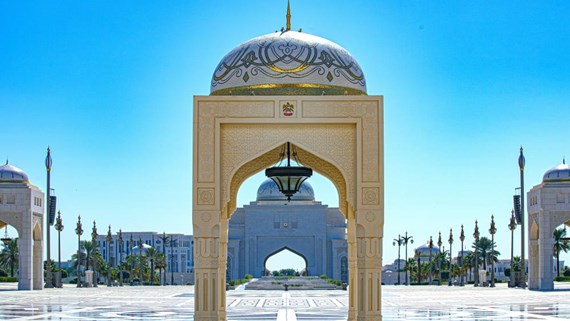Cross-cultural calling: new UAE art regulation lights the way for foreign museums
Insight

Almost two decades ago, the then head of Abu Dhabi’s tourism authority, Mubarak Hamad al-Muhairi, looked to the future of cultural life in the UAE and asked: “Could the Damien Hirst of 2020 be an Emirati? Well, why not?” On one level, this statement sagely anticipated the installation of an enormous shark tank within the Dubai Mall, which has brought a touch of Hirst’s surrealism to the area. More broadly, however, the comment accurately sets the scene for the way in which the UAE – and the wider region – has, in the intervening years, increasingly placed itself on the map as a centre for art and cultural heritage.
One of the most obvious indications of the impact that the UAE is making on the international scene is the close association between many of Abu Dhabi’s new museums and some of the world’s biggest institutions, such as the Louvre and the Guggenheim Foundation. Across the border, Saudi Arabia has forged increasingly strong international cultural associations, and in February 2025 Sotheby’s became the first international auction house to open there. For institutions seeking international expansion, as well as for collectors based in the region, the signs suggest that it is a time of opportunity in the Middle East.
In a development that builds on this regional momentum, the UAE recently passed a significant piece of legislation to regulate the establishment and operation of “Art Institutions” in the country. As the country takes strides towards expanding its cultural offering even further, this article looks at why and how foreign institutions might look to set up in the UAE.
The new law
On 13 November 2024, the UAE enacted a new Federal Decree entitled “On Empowering the Arts Sector”. As the name implies, this is a law designed to strengthen the arts and cultural property sector in the country. A central part of this is the establishment of a framework for regulating what are considered (under the new law) “Art Institutions”. These institutions must be not-for-profit and can take a variety of forms, including museums and entities established to put on temporary shows. The law incentivises the establishment of such institutions by simplifying the process of setting them up, as well as by providing for beneficial tax and customs exemptions.
It remains the case that a licence is required to practice a wide variety of artistic activities in the UAE, whether as an individual, a corporate or some other entity. However, the new law simplifies the specific licensing procedures for certain legal entities. Institutions will operate under relatively close state supervision. UK readers might draw comparisons between the UAE concept of an “Art Institution” and aspects of supervision to which many of our national institutions are subject as both charities and public bodies. Art Institutions are, for example, obliged to stick to their specified purposes, must remain not-for-profit and non-political, and will be recorded on a central register.
Reflecting the UAE’s hope that cross-border cultural collaborations will strengthen and provide a platform for wider investment in the region, the Decree explicitly sets out that foreign cultural institutions can establish Art Institutions in the UAE, provided they comply with this regulation.
The local context and the future
Foreign museums and other cultural institutions have historically faced a number of barriers to developing stronger links with the UAE. In particular, import and export regulations made loans to or from international institutions difficult – for example, significant fees were levied where items were shipped back to their countries of origin after remaining in the UAE for more than six months. By contrast, this new legislation works in conjunction with a 2022 UAE Decree to facilitate a favourable customs environment for Art Institutions. In addition, the new Decree grants tax exemptions to certain Art Institutions and allows further exemptions to be granted at a local level.
The Decree comes in the context of, among other policy drives, the “Abu Dhabi Vision 2030 Master Plan”. Under this initiative, some of the UAE’s most famous new cultural institutions are being founded, including Guggenheim Abu Dhabi, Louvre Abu Dhabi and the Zayed National Museum. Notably, the latter (due to open in autumn 2025) has entered into a partnership with the British Museum to facilitate assistance with curation and loans of artefacts. Indeed, it seems immediately conceivable that the amount of loan and temporary exhibition activity with the UAE will increase – and, for some institutions, a supplementary motive may be to gain a learning experience of being “in country” before taking bigger steps in the future.
Institutions such as these in the UAE now attract millions of tourists each year. The initiative now has undeniable momentum, and presents museums with an opportunity to engage with a diverse, international audience. The UAE’s strong support for cultural projects – including a programme of significant funding grants to Emirati creatives, along with the annual international art fair Art Dubai – means both the cultural production and cultural appetite of the region is only likely to increase. This, coupled with the incentives now on offer for foreign institutions looking to expand their global footprint, means that some form of collaboration with the UAE could merit serious consideration for foreign museums and cultural institutions.
Who knows – they might just end up exhibiting the next Damien Hirst.
This publication is a general summary of the law. It should not replace legal advice tailored to your specific circumstances.
© Farrer & Co LLP, April 2025






